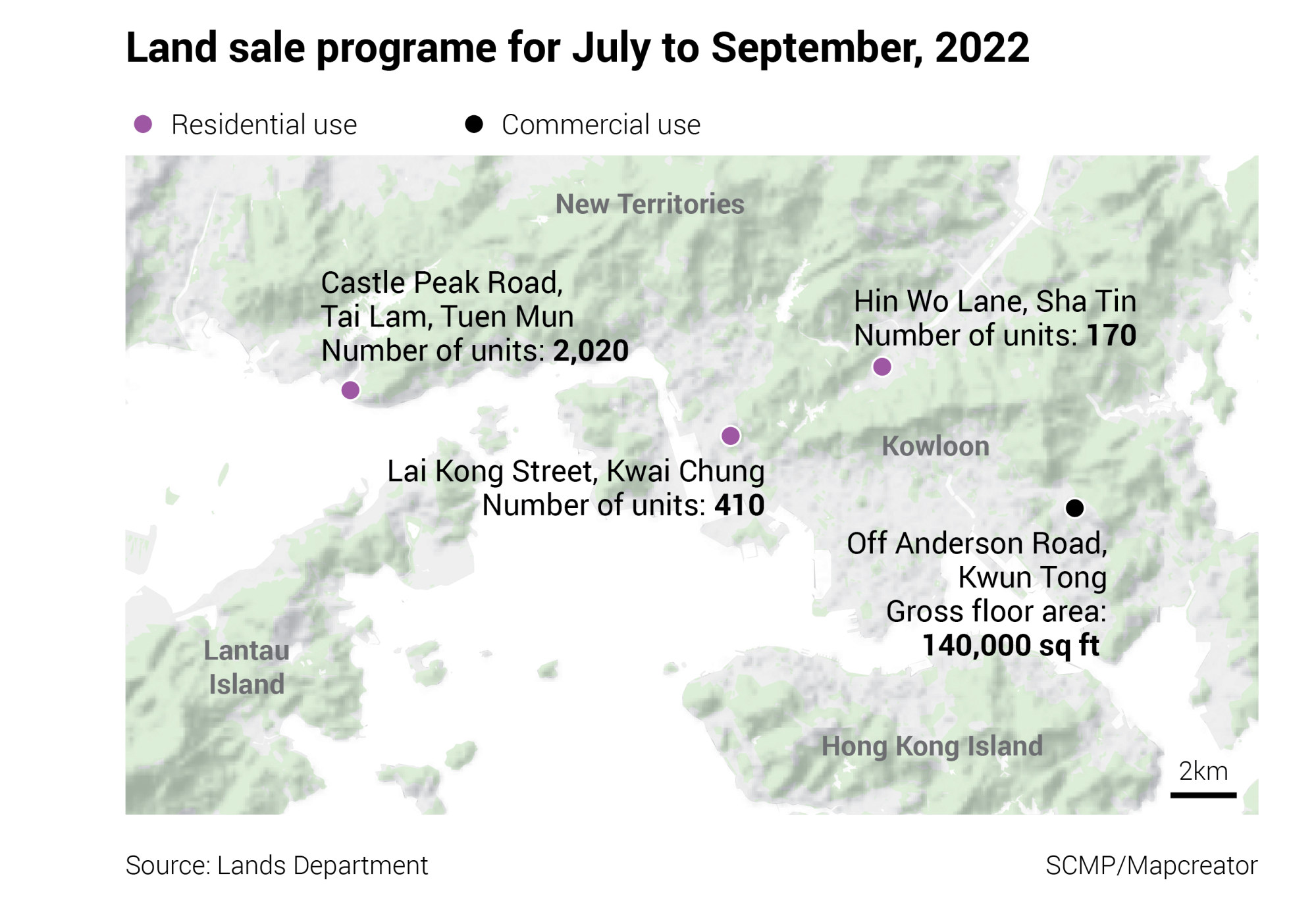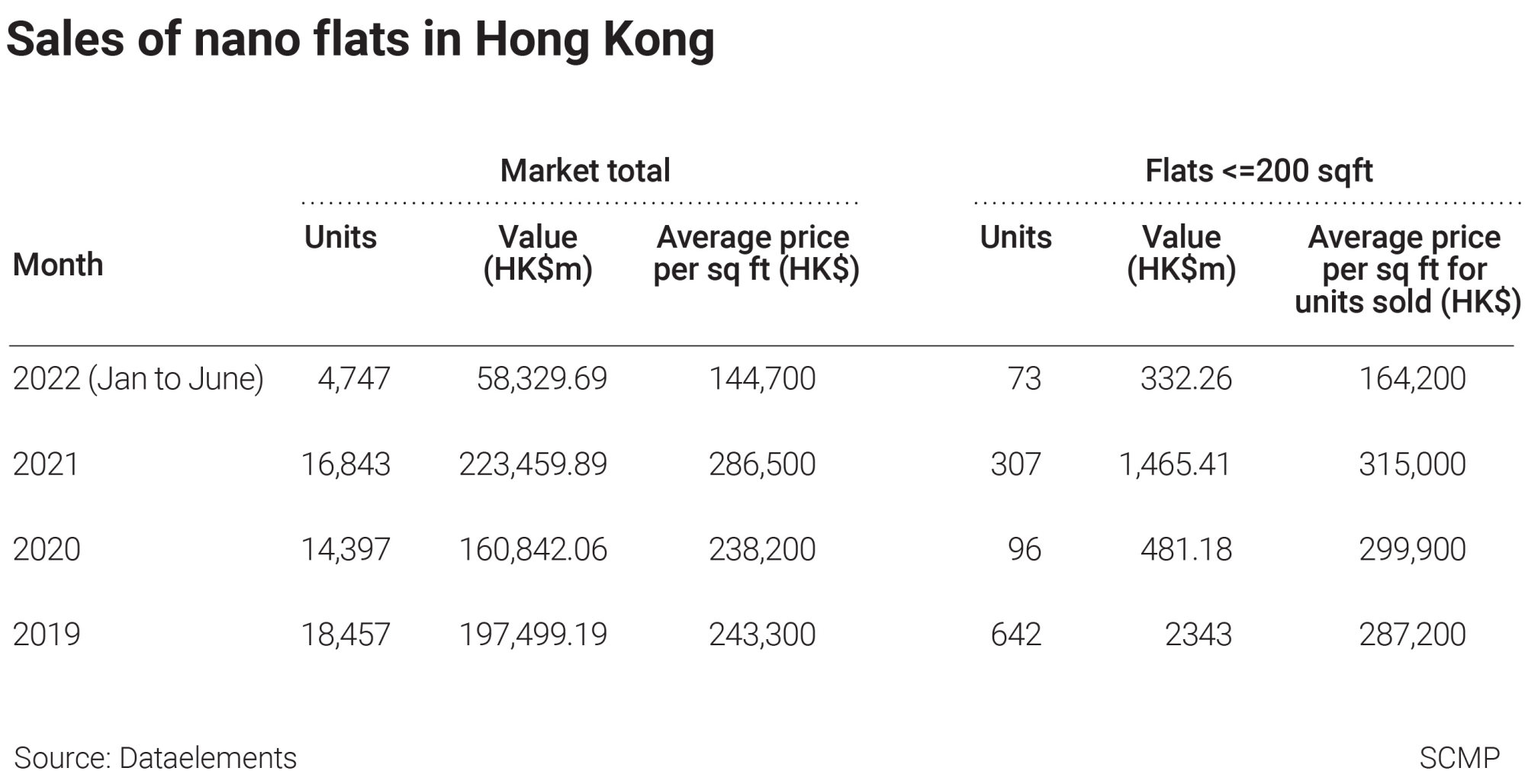
Hong Kong housing shortage: government acts on John Lee pledge to ‘spare no effort’, sets stage for tenfold increase in homes to be built in second quarter
- Government will sell three plots of residential land in Sha Tin, Kwai Chung and Tuen Mun valued by Knight Frank at up to HK$9.1 billion (US$1.2 billion) in the financial second quarter
- Hong Kong will continue to increase supply in ‘multipronged approach’, Secretary for Development Bernadette Linn says
The government will sell three plots of residential land in Sha Tin, Kwai Chung and Tuen Mun, totalling 3.9 hectares (9.63 acres), according to an announcement by Secretary for Development Bernadette Linn.
The parcels, valued by Knight Frank at up to HK$9.1 billion (US$1.2 billion), can accommodate 2,600 flats, a tenfold increase from the 270 flats the government offered in the first quarter of the financial year that began on April 1.
“Looking ahead, the government will continue to increase that supply in a multipronged approach, sparing no efforts [to implement] a series of sites production projects, including new development areas, reclamation, rezoning of individual sites,” Linn said in her maiden address as the top official responsible for development.

The plan came hot on the heels of two task forces established by Lee’s new administration to tackle Hong Kong’s intractable housing problem and land supply. The two groups held their first meeting on Tuesday, along with two other task forces on underprivileged students and district matters.
Chinese President Xi Jinping instructed Lee’s team to “strive to deliver” what “the people of Hong Kong desired – a better life, a bigger flat, more business start-up opportunities, better education and better elderly care”, during his keynote speech to inaugurate the new chief executive’s term on July 1.

“We will also continue to look for more land resources as well as compress our development procedure through administration and legislative themes to expedite site search and production to meet the needs of our community,” Linn said.
Lawmaker and surveyor Tony Tse Wai-chuen, chairman of the Legislative Council’s development panel, said the latest announcements mean the government is continuing to fall short of its long-term targets.
“The government’s target is to supply about 13,300 private residential units per year, but now there will only be about 5,300 in the first half of the year,” he said. “I think the government really needs to remove the red tape and speed up the process of land development. Developers have complained that it can take six to seven years to go through various processes. This is ridiculous.”

The 2,600 number is the highest for almost four years, going back to the fourth quarter of 2018, said Buggle Lau, chief analyst at Midland Realty. The increase was mainly due to the fact that the government had relaunched the Tuen Mun site, he added.
Hong Kong’s government under former leader Carrie Lam Cheng Yuet-ngor set a 280 sq ft minimum size for flats built on government land last December. The rule was observed for housing projects undertaken by the city’s railway operator MTR Corporation and by the government’s Urban Renewal Authority (URA). It was further extended to all private projects subject to lease modifications and land exchanges in February.
However, private projects that were not subject to lease modifications and land exchanges are still not covered by the minimum flat size requirement.
Hong Kong’s housing supply will be boosted by about 3,210 flats in the second quarter, combining with about 2,140 units from the first three months of the financial year, yielding a total of 5,350 homes in the first half, or 40 per cent of the government’s target of private housing. This supply excludes private development projects that do not require lease modifications.
The increased housing supply is needed to meet pent-up demand for housing. The actual land supply for the last financial year exceeded the annual target by 51 per cent to 18,930 flats, Linn said.

Hong Kong’s housing market is in a slump, as property sales are being beaten down by a resurgent Covid-19 pandemic and expectations of rising interest rates.
“The land sale market sentiment will stay subdued as housing prices are likely to stay stable in the coming years,” said Joseph Tsang, chairman at JLL in Hong Kong.
A surge in construction costs and interest rate hikes will add to developers’ required risk premium and there will be fewer aggressive players in the market, as mainland Chinese developers have already become conservative in the Hong Kong land market with China’s economy slowing, JLL said.
Apart from government land sale, the URA plans to put up for tender a project in To Kwa Wan capable of providing about 550 flats. In addition, three private development projects are expected to complete lease modifications this quarter, providing a supply of about 50 flats.
Separately, the government will sell a commercial site on Anderson Road in Kwun Tong on the eastern fringe of the Kowloon peninsula, which can provide around 13,000 square metres of gross floor area, to be developed into shopping centre.

